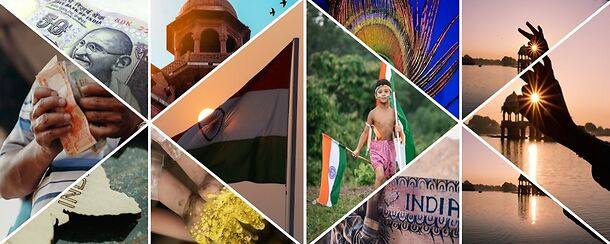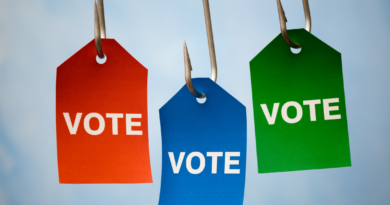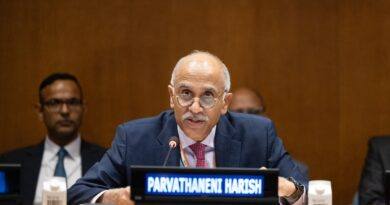India Beyond 75: Looking Ahead
Some statistics first.
The GDP of India in 1947 was Rs.2.7 lacs crores, which accounted for 3% of the global GDP then. Today it is USD 2.62 lacs crores, which is more than 70 times higher than 1947, and is now 6.68% of global GDP. Not a great rise, since the per capita income in India in 1947 was Rs.250 annually, which now is USD 2200 (Rs.1.6 lacs roughly) annually, primarily due to several fold rise in prices over the decades, apart from some real income rise. Population of India in 1947 was 340 million, that of the USA today, and India today is at 138 crores, merely two crores behind China, and is expected to surpass China in 2022. The literacy rate in India in 1947 was pegged at 12%, which is now almost 74% of all adults.
India has dropped one spot to 131 among 189 countries in the 2020 UN human development index after showing a steady rise over the years, and this measure was not there in 1947. India has shown a consistent downward trend in the World Happiness Report, which measures the perceived happiness of citizens in 149 countries on a number of factors. Meanwhile, India ranked 121st on the economic freedom index in 2021. The recently released 2020 WPFI has ranked India at 142, down 2 places from 2019, has been a subject of much discussion and debate.
The NRIs-PIOs officially number today around 32 million, while unofficial figures run above 40 million. These remittances contribute almost 3% of India’s GDP in 2020 (more than their ratio to Indian population), and they also shape the country’s foreign exchange money of around 22% to 23%. Besides, NRIs often initiate charities and have been instrumental in offering financial assistance during testing times such as the ongoing pandemic, floods etc.
Some statistics that show a few hard facts. That we will be vastly different from what we were in 1947 is no brainer. But the slow progress of this century specially over the last two decades is worrisome.
As we are midway in the 75th year of our independence, we need to raise questions as to where do we go from here and how.
History has shown that all economies, state ideologies and governance structure have some problem or error or the other. What then a truly people-oriented democratic government can do is to ensure greatest good for the largest number of people in a nation. From this yardstick, some issues and questions can surely be raised.
Democracy: Representative or Participative, & how?
India has an elected government, in three tiers, from local-self governance, to provincial governance to central/federal governance. Elections have been fairly regularly. But from the very start of independent India, the politics of vote-banks, done on the basis of castes or communities, divided on religious, linguistic or ethnic lines, has undermined the efficacy of democracy in India.
In recent times, it is worsening with the majority community, who are almost 4 out of every 5 persons in the nation, being made to feel insecure to lead to majoritarian polarization in politics, pushing people’s issues to the backburner just ahead of elections.
India has for long needed an electoral reforms law, making communal or casteist polarization illegal, manifesto-based politics compulsory, all expenses of a candidate and his/her party to be included in election expenses (now only that of candidate are included), use of government resources by any ruling party being declared illegal, and model Code of Conduct being far more strictly implemented. Going beyond 75 years, Indian democracy needs an overhaul in its representative character.
Going beyond elections, participatory democracy needs a major push by genuinely honoring Right to Information, preventing hiding behind state secrets (except in very few sensitive matters), and ushering in some form of Right to Recall the elected representatives by the electorate.
Government: how representative is it after all?
Closely with the task of strengthening democracy in letter and spirt, the governance also has to be inclusive. Interestingly jut 33-35% of those adults who have actually voted (which itself can be around 60-65% of the total electorate) can get a government elected at any level in India. Hence, say by managing to get 20 crores of votes or even lesser, one can be in power in a nation of almost 140 crores (seven times). By bringing in proportionate voting or second choice with lesser weightage, this error can be rectified, as done in several leading Western democracies (US, UK, France, Germany, etc).
Hence, governance of such a narrowly elected government is bound to fall a victim to vote-bank politics and interests of smaller groups (communal or regional or caste-specific) more than maximum good for the maximum citizens.
Polity: how competitive is it at all?
The question of Electronic Voting Machines has also come up in recent times in the context of repeated malfunctioning of machines, errors usually favouring the ruling party at the Centre, several opposition forces raising questions on its neutrality and amenability to be hacked, and the fact that most Western democracies had introduced the EVMs and later withdrew in favour of ballot papers. The nation has to truly find a completely trustworthy system of voting and vote preservation.
Further, to enhance true competitiveness of the polity, level playing ground is needed by strictly enforcing electoral expenses laws. Today the common expenses done by a party in an election are not considered as a part of the expenses of a candidate, and hence most parties incur huge unaccounted expenses in elections with money collected by fair or foul means, while their candidates show much lesser expenses of local campaigning. The use of government machinery in elections, calling for votes on the basis of sacrifices of the military which is of the nation and not a party, and suspected misuse of EVM machines surely hamper a competitive polity needed for a democracy.
Education: what ails the system and where can we begin to change? Ensuring Right to Education: how?
Article 21 (A) of the Constitution of India was amended to provide free and compulsory education as a fundamental right to all children aged between 6-14 years. Article 15, 17, and 46 of the Indian Constitution safeguard the educational interests of weaker sections of the society. These comprise socially, economically, and educationally backward families including those belonging to scheduled castes (SCs), and scheduled tribes (STs).
However, we are still at 74% of all adult population in literacy, and this is merely the ability of write and sign names. Around 1045 universities and 40,000 colleges are responsible for the higher education of Indian adults. The corresponding figure for Chinese universities is at 2700. The Indian school education system is one of the largest in the world with more than 1.5 million schools, of which almost two-thirds are government-run. In contrast China has 96% literacy of all adult population with a law of compulsory ten years of school education.
Beyond numbers, the quality of education, its spread to the interiors, the digital divide and the availability of teachers are some other factors impeding Indian education at the mass level. While a progressive New Education Policy has been recently legislated in India, its promised 6% of GDP as public education investment has not been achieved even by half, and a massive bureaucracy impedes autonomy of education on one side, and the glaring limitations of physical and digital infra-structure proliferation impede quality of education on the other.
The available resources are further skewed against the girl-child. There is a whopping 21% gap between male-female literacy, in spite of the much-touted ‘Beti Bachao, Beti Padhao’ campaign which has been by now proven to be more a campaign than any major action on ground. The employability of women being low, girls being considered still as ‘paraya dhan’ to be married off by the larger masses, and the question of physical security of young girls and women moving out of homes to distant institutes, the eco-system continues to remain biased against the girl-child.
While the promised 6% of GDP/budget in public education needs to be fulfilled at the earliest (Delhi state has 24% in education, Bengal, Kerala and Tamil Nadu all crossing 5%), liberalization allowing higher private and people’s investments in education is the need of the hour. The compulsory education up to plus 2 level, integrating a vocational skill alongside, a promise of the Constitution is needed to be implemented in right earnestness, making Right to Education a fundamental, inclusive and accessible right for every child till 18.
Economy: Where do we go from here?
The crisis ridden economy of India, burdened with a huge debt. The internal debt of government of India is about Rs.131 lac crores. Foreign debt is at $571 billion or Rs.44 lac crores. Total debt as on today is Rs.175 lac crores, which was Rs.56 lac crores, and the current government has been borrowing Rs.1.3 lac crores every week in the last 7 years. Our current gross debt is almost equal to the annual GDP of the nation. The interest itself is Rs.10 lacs crores plus every year, which leads to more borrowing, and we submerging into a classical debt trap.
The way out being sought is selling of all public assets, from airlines to insurance, from railways to banks, from factories to PSU companies, in the name of ‘monetization of assets’, and also increasing taxes and fuel prices.
We, actually need infusion of cash in the economy through limited printing of currency on one hand, and through return of Non Performing Assets which are loans to larger business houses. NPAs in Indian public banks has crossed 12 lacs crores, which was below 2 lacs crores in 2014, and that was bad enough. Rampant privatization does not help is proven by such a huge NPA burden on the economy. Also, we need a strong MSME focus, learning from the success of the newest Asian tiger, Bangladesh, which has a higher GDP and per capita income growth than India (even Sri Lanka). The people’s sector of social entrepreneurship also needs regulatory support which is unfortunately just the opposite in India today with the development sector chocked from every quarter. Skilling in education, massive micro and mini entrepreneurship, and push to all ancillary industries are also needed to help grow the economy. There is a huge unfulfilled demand of low priced products and services within India, that needs to be tapped.
In Conclusion
Several other policy areas need refocus, which can be taken up in the next edition. We need to have a relook at foreign policy, health sector, agriculture revamp, sustainable industrialization, unleashing the power of the creative sector, and the like.
From singular vision to a diversity ingrained, from power-driven polity to welfare-driven polity, India@75 needs a relook at its way ahead on the lines of the mentioned roadmap.
The author is a former Pro Vice Chancellor of an Indian university, and currently the Secretary of Global Media Education Council, consultant to a global university, and on the board of an ed-tech company of South Asia.





Pretty section of content. I just stumbled upon your blog and in accession capital to assert that I acquire actually enjoyed account your blog posts. Anyway I will be subscribing to your feeds and even I achievement you access consistently rapidly.
When I initially commented I clicked the “Notify me when new comments are added” checkbox and now each time a comment is added I get four emails with the same comment. Is there any way you can remove people from that service? Thank you!
This page really has all the information I needed about this subject and didn’t know who to ask.
Top ,.. top top … post! Keep the good work on !
I think the admin of this web site is truly working hard for his site,
since here every data is quality based material.